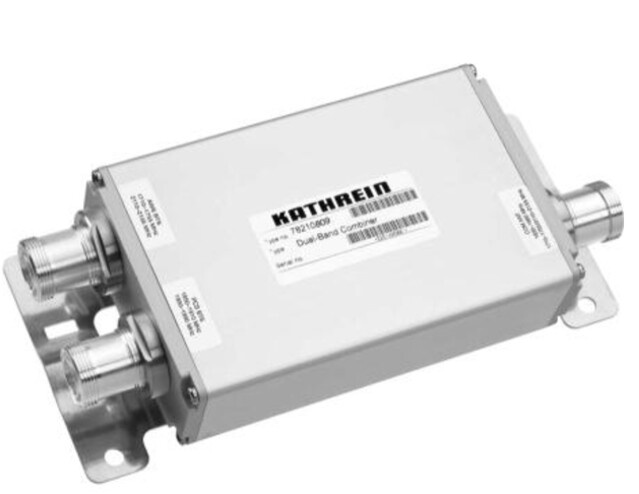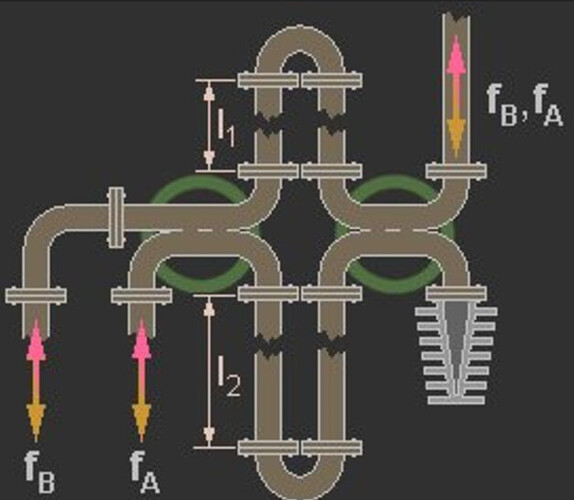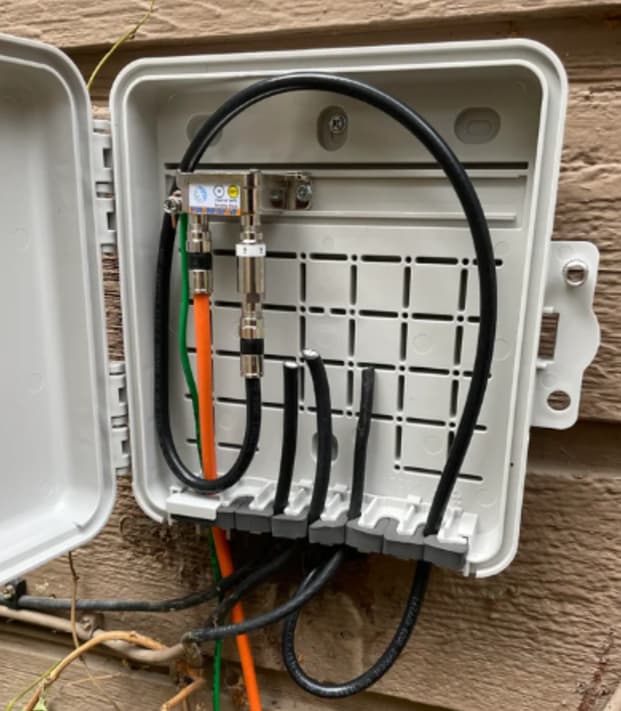
Abstract
This article provides a detailed analysis of the Diplexer, discussing its structure, operation, construction materials, applications, advantages, challenges, and its relevance in modern telecommunications systems. The objective is to offer a comprehensive understanding of its technical and practical importance in various applications.
1. Introduction
The rapid advancement of telecommunications necessitates efficient infrastructure use to support multiple frequency bands. In this context, the Diplexer plays a crucial role, enabling the combination or separation of signals from different bands through a single cable or antenna. This article explores the technical characteristics and applications of this RF passive device.
2. Definition of the Diplexer
A Diplexer is a passive device that combines or separates signals from different frequency bands. It employs filters to ensure that each band is processed selectively, enabling multiple frequencies to share the same physical path.
3. Structure and Materials
3.1 Materials
- Ceramic: Used for compact, high-precision devices.
- Metallic cavities: Ideal for high-power applications in outdoor environments.
- PCB with dielectric substrates: A lightweight, cost-effective alternative.
3.2 Internal Components
- LC filters (inductance and capacitance) or resonant cavities tuned to specific frequencies.
- Standard connectors, such as SMA or N-Type, depending on the application.
3.3 Dimensions
Dimensions vary according to signal frequency and power. Smaller devices operate at higher frequencies, while larger devices dissipate heat generated by high-power signals.

4. Operation
The Diplexer has three main ports:
- Input/Output Ports: Associated with different frequency bands.
- Combined/Separated Port: Used to merge signals from different bands into a single path or separate them into their respective frequencies.
Its operation is based on band-pass filters, allowing signals within specific ranges to pass while rejecting unwanted frequencies. This selectivity ensures band isolation and minimizes interference.
5. Applications
Diplexers are widely used in various telecommunications fields, such as:
- Cellular Networks: Combining multiple bands (e.g., LTE at 1800 MHz and UMTS at 2100 MHz) to optimize antenna use.
- Satellite Communications: Separating uplink and downlink frequencies.
- Radio and TV Systems: Sharing infrastructure for multiple-channel transmission.
- Wi-Fi Networks: Separating 2.4 GHz and 5 GHz bands in dual-band routers.
6. Importance
6.1 Infrastructure Optimization
Reduces the need for additional cables and components by allowing different bands to share a single physical path.
6.2 Interference Reduction
Filters out-of-band frequencies, ensuring that each device operates within its designated band.
6.3 Support for Modern Technologies
Essential in MIMO (Multiple Input, Multiple Output) systems, used in advanced networks like 5G.
7. Advantages
- Cost-Effectiveness: Reduces the need for additional infrastructure.
- Flexibility: Allows the integration of multiple technologies into a single system.
- High Efficiency: Minimal signal loss during combination or separation.
8. Challenges and Limitations
8.1 Isolation
Interference may arise if the isolation between bands is inadequate.
8.2 Insertion Loss
Minor signal loss occurs during the combination or separation process, affecting efficiency.
8.3 Maintenance
Outdoor devices are subject to degradation due to factors like corrosion and humidity.
9. Conclusion
The Diplexer is an indispensable device in modern telecommunications systems, playing a critical role in combining and separating frequency bands. Its ability to optimize infrastructure, reduce costs, and ensure system efficiency makes it essential in applications such as cellular networks, satellites, and broadcasting systems. Despite challenges like maintenance needs and potential signal losses, its benefits far outweigh its limitations.
10. References
- Engineering LibreTexts: Overview of transmission and reception operations with definitions of terms, including diplexers and duplexers. Available at: Engineering LibreTexts
- Johnson’s Techworld: Detailed explanation of differences between diplexer and duplexer, with practical examples in amateur radio and satellites. Available at: Johnson’s Techworld
- Microwaves & RF: Technical insights on using filters, diplexers, and duplexers in RF system integration. Available at: Microwaves & RF
LinkedIn (in Portuguese): ![]()

